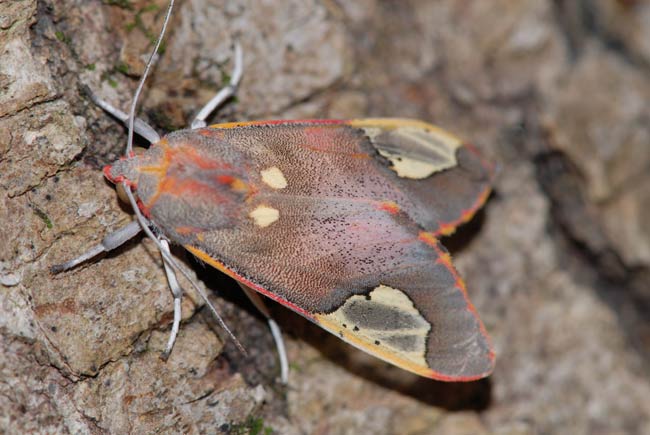Wow! Moths Jam Bat Sonar

Tiger moths can thwart attacks from bats by effectively jamming the bats' sonar, doing so by emitting sudden bursts of ultrasound, scientists now find. Past research had revealed that many night-flying moths have evolved the ability to hear bat sonar. A number were even seen responding with clicks of ultrasound. Other studies revealed that moth ultrasound could startle bats off. Research also showed the outbursts could warn bats that such moths had a nasty taste, just as flashy colors on some animals can serve to ward off potential predators. Still, there was the enticing possibility that some moths used ultrasound to actually foil bat sonar. To look for a case of sonar jamming, investigators employed ultrasonic recordings and high-speed infrared video to analyze how big brown bats (Eptesicus fuscus) interacted with one particular species of ultrasound-emitting tiger moth (Bertholdia trigona) over the course of nine nights in enclosed rooms. If the moth sounds were just meant to startle bats, bats would eventually get used to the outbursts and go on to catch the moths. If the insect clicks were just meant to warn bats they were unpalatable, the bats would have stopped attacking the moths after trying one first. However, the researchers saw that bats neither increased nor decreased their odds of catching these moths, and instead their ability to catch the moths remained consistently poor over time. This suggested the ultrasound bursts were not meant to startle the bats nor warn of bad taste. As such, the insects might have evolved a genuine sonar-jamming defense mechanism to save them from bats. "This reveals that even a small moth can defeat the most sophisticated acoustic predator known," said researcher Aaron Corcoran, a biologist at Wake Forest University in Winston-Salem, N.C. "It's a fantastic example of an escalating arms race between predator and prey, with each trying to constantly one-up the other." Further analysis of the moth reveals it is well suited for disrupting sonar, possessing highly developed ultrasound emitters. "These moths can make an incredible amount of sound, 450 clicks in a tenth of a second," Corcoran explained. "That's essential, because a bat's entire attack sequence can last just one second, maybe two seconds on the long end, and so the moths have to be quick, listen to the bat echolocation calls and then figure out the right time to make the right sounds to jam them. It's an extraordinarily fast, dynamic response." The researchers are now investigating how roughly 20 species of bats and 30 species of moths use different attack and defense strategies in Arizona, using ultraviolet lights to attract the moths at night and high-speed cameras and microphones to record their interactions. "Who are the winners and losers in these battles?" Corcoran asked. "That's what we want to find out." The scientists detailed their findings in the July 17 issue of the journal Science.
- Video – What Ultrasound Reveals
- Amazing Things You Didn't Know About Animals
- Bats: News and Information
Get the world’s most fascinating discoveries delivered straight to your inbox.



